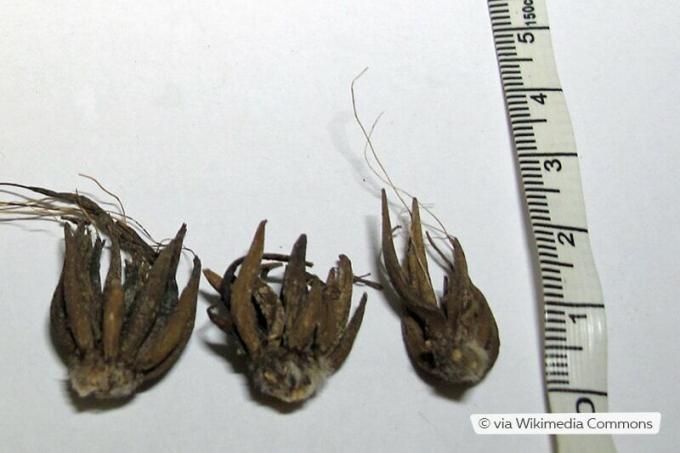
With their colorful, densely filled flowers, ranunculus is one of the most beautiful bedding flowers and also cuts a fine figure in the bucket. But are ranunculus also hardy?
In a nutshell
- Winter hardiness severely limited
- Winter protection required in the bed
- Alternatively, dig up tubers
- Appropriate aftercare
Table of contents
- Hardiness of Ranunculus
- Hibernation in the bed
- Overwinter bulbs frost-free
- Conditions in winter quarters
- Proper aftercare
- frequently asked Questions
Hardiness of Ranunculus
ranunculus (Ranunculus asiaticus) are considered to be perennials, but are usually only cultivated as annuals due to their limited winter hardiness. Cooler temperatures are not a problem. However, the closer they get to freezing point, the more sensitive these pretty ones react summer flowers. In particularly mild locations, they can overwinter in beds with appropriate protection. As a rule, however, it is better to dig up the tubers and overwinter in a frost-free place indoors. This is also advisable because the ranunculus bulbs do not tolerate wet and heavy soil, especially in winter.

Hibernation in the bed
If overwintering outdoors is possible, then in milder regions such as Saarland, Rhineland-Palatinate or the Lake Constance region. But here, too, you should pay attention to a sheltered and warm location and suitable winter protection when hibernating. It should consist of an insulating layer made of compost, brushwood, dry leaves or fleece, for example. The respective material should be placed generously on the root area or distributed over the tubers and removed again in good time in spring.
Overwinter bulbs frost-free
As soon as the ranunculus their flowers loses, one can begin with the hibernation. Watering is reduced and fertilizing is stopped. The tubers should be dug up at the latest when the daytime temperatures drop to five degrees, but in any case before the first frost. Here's how to do it:
- Dig up and clean tubers
- Remove wilted and dead plant parts
- Remove soil residue from tubers with a brush
- Carefully remove existing tubers
- let air dry
- about a day or two
- then put the tubers in sand or a wooden box
- alternatively wrap in paper

Tip: If there is still intact foliage on the tubers, it should be left there until it has completely withered. The tubers obtain the nutrients they need to overwinter from these parts of the plant that have not yet died.
Conditions in winter quarters
These plants need significantly cooler temperatures to hibernate, but without being exposed to frost. You can find them in the attic, in an unheated basement, in a storage room, for example garden shed or a frost-free garage. What else to look out for:
- dark, well-ventilated and dry winter quarters
- with temperatures between five and eight degrees
- Tubers go into dormant mode
- artificial lighting not recommended
- as well as too warm hibernation
- ensures early sprouting, hibernation is disturbed
Tip: Ranunculus hibernates from about October to March.
Proper aftercare
After a successful hibernation, the tubers must be prepared for new growth before they can be planted out again. Regardless of whether in the bed or in a pot. To do this, the tubers are first checked for possible damage. Then it's time to plant:
- Planting in beds from the end of April
- healthy tubers previously for approx. soak for five hours
- Tubers then relatively smooth surface
- Now put three to four centimeters deep in the ground
- replace soil in specimens in pots
- Fertilize for the first time after the first leaves appear

frequently asked Questions
Yes, that is possible. It is best to put them in a pot in autumn and then put them in a place protected from frost.
Tubers that are overwintered indoors can be planted again in the spring in the same spot. Unlike specimens that are permanently in the bed or also overwinter there, they should be moved every two to four years.
They are usually planted in spring. For earlier flowering from approx. At the end of February you can plant the tubers in a sheltered spot in autumn, but you should protect the sprouting from late frosts.
